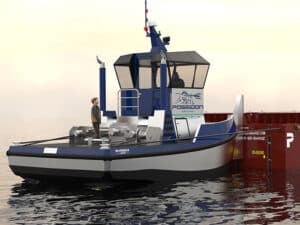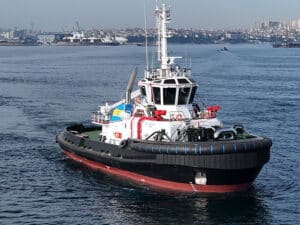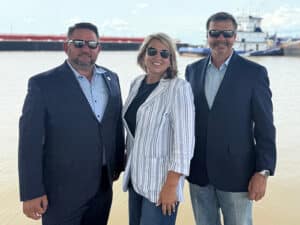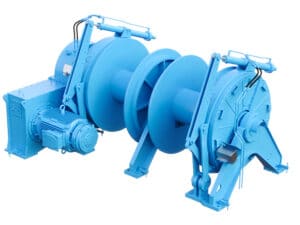
Damen develops a future-ready fuel flexible tug
Written by Nick Blenkey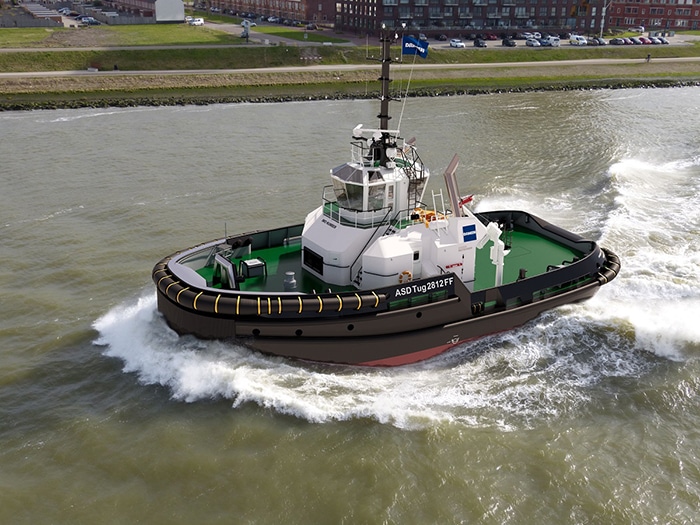
Flexible fuel tug: Damen ASD Tug 2812 FF:
With regulatory pressures mounting, operators of all types of vessels, including tugs, are assessing all the alternative fuel technology options. Releasing details of a new fuel flexible tug design, Damen, one of the world’s leading tug builders, says that the move towards a cleaner future is not only a challenge for vessel operators, but for shipbuilders too. They are faced with creating and constructing a platform that will be suited for operations in a future that remains far-off and unknown.
“During its lifetime, a tug that is delivered today will be required to reduce its emissions year on year until, by 2050, it is sailing with zero emissions or is carbon neutral,” says Damen’s product manager tugs, Erik van Schaik. “The issue is, it’s not commercially attractive to upgrade an existing tug to the new technologies required to achieve this – an operator would literally be pricing themselves out of the market.”
The big question is how to pay today for technology that will only provide a return on investment years into the future. It’s not the only question. What fuels will be available? What fuels will be affordable? Plus, in many cases, the technology required has not yet reached maturity even if someone were willing to invest in it.
Damen’s response has been the development of the Fuel Flexible Tug – the ASD Tug 2812 FF — a vessel prepared today, for whatever tomorrow may demand of it. Damen expects the first vessels to be in the water by 2026.
“The idea,” says van Schaik, “has been to create a vessel that, as standard, is prepared for operations on a variety of dual-fuel arrangements right now, ready for a rapid – and very cost-effective – adaption in the future once some of the questions can be answered.”
To achieve fuel flexibility Damen has adapted the tug’s design. To support less energy dense fuels, the vessel is required to be both heavier and larger. The tug, however, must remain compact, as required by the modern port operation. To ensure this, Damen is installing a very compact wheelhouse and reducing the beam. Beneath the waterline, the vessel will have volume enough to support the fuel preparation space and alternative tanks for fuels such as methanol – the first fuel that Damen is preparing for.
CHALLENGES
“A particular challenge was that class and flag state rules for the use of methanol and ethanol in ships are not feasible on compact vessels like this,” says van Schaik.
To overcome this, Damen set about forming a collaboration with Bureau Veritas (BV), as well as Belgian and Dutch flag state authorities and engine manufacturer Caterpillar. Together, the partners undertook a risk-based design process.
“The process involved identifying existing rules not applicable to smaller vessels and replacing them with alternative solutions,” van Schaik notes. “Working together with several stakeholders like this we were able to adapt design features relatively rapidly and quickly achieved a number of approvals in principle (AiPs).”
To achieve AiP, the solutions were required to be at least as safe as the originals. This required some out of the box thinking from the collaborators.
Among the risks Damen needed to consider was the low flashpoint of methanol at around 10° C, as opposed to the approximately 60° C of diesel – a temperature at which methanol begins to boil over. Plus, air mixed with methanol become explosive, creating a risk of toxicity, explosion or fire should there be an accumulation of vapors.
To avoid this, the rules require the positioning of a cofferdam between the methanol tanks and air to prevent methanol leakage and to prevent heating of the tanks – a solution not suitable for a space limited, compact tug.
Damen’s alternative was a full penetration welding solution on the methanol tanks to prevent leakage and the installation of methanol sensors in surrounding compartments. To prevent heating, A60 insulation is placed between the methanol tanks and air. Additionally, the tug is provided with combined tank-connection spaces/methanol-preparation spaces situated directly against the methanol tanks.
Additionally, the air ventilation required for methanol preparation spaces typically results in the establishment of permanent hazardous areas around the outlets – again not something that is feasible on a tug.
Here, Damen developed a solution in which closed spaces are filled with nitrogen. The replacement of oxygen with nitrogen mitigates explosion risk and avoids creation of permanent hazardous areas.
Another requirement of current rules is venting to allow release of overpressure that may occur. Again, this requires the creation of permanent hazardous areas. Here, Damen came up with the solution of storage tanks able to handle all likely pressure fluctuations that can occur during normal operation. As a result, there is no unexpected emergency release of toxic, flammable vapours and, therefore, no permanent hazardous zones.
Each of these solutions has been awarded an AiP from BV, and each has a patent pending.
“With this we aim to provide the market with a commercially viable decarbonization road map based on fuel flexibility. The Fuel Flexible Tug provides operators with the means to continue operating – competitively – at the present time, while being prepared to make the switch to a greener fuel in the future when it becomes possible and more viable, and when there is a clearer picture of which direction to take,” concludes van Schaik.

